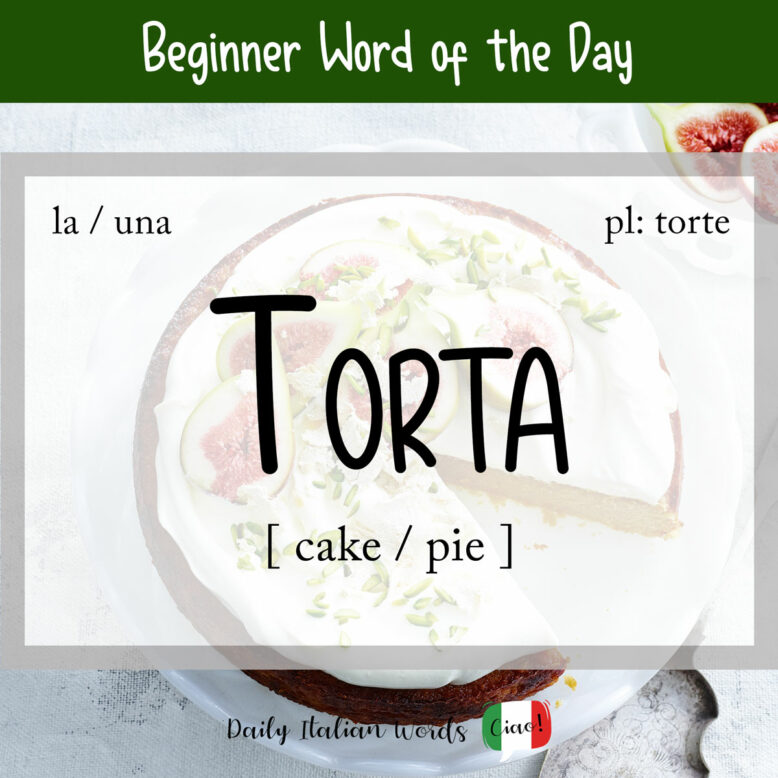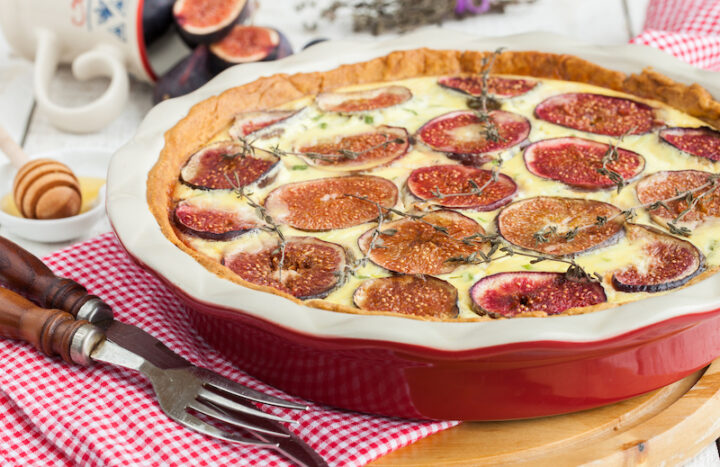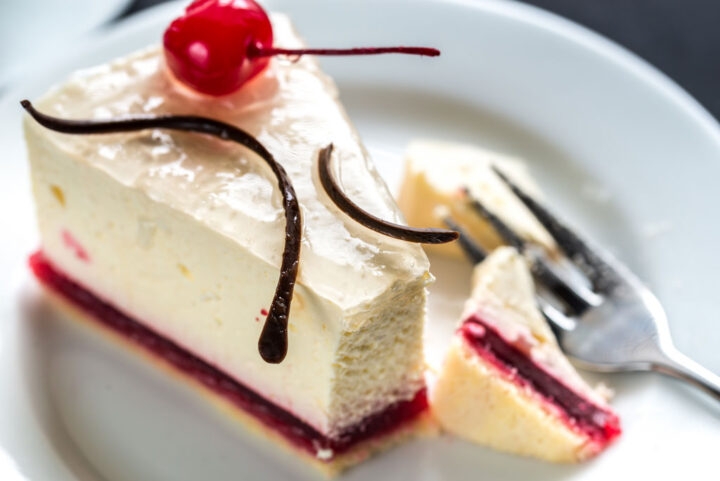The generic name for a baked sweet that is round in shape and made from ingredients such as flour, sugar, butter and eggs is torta (feminine, plural: torte). Although cake is the most common translation in English, it may also denote a pie.

Learn with our video
Some different kinds of sweet torte people enjoy include:
- torta di compleanno = birthday cake
- torta nuziale = wedding cake
- torta di mela = apple pie
- torta di cioccolato = chocolate cake
- torta alla frutta = fruitcake
Ho mangiato tre fette di torta e adesso ho mal di pancia.
I ate three slices of cake and now I have a stomach ache.

If a torta is savoury instead of sweet, it tends to be called a torta salata which translates in English as savoury pie, savoury tart or quiche. This kind of torta often contains cheese and vegetables such as potatoes, zucchini, spinach and so on.
Ho preparato tre torte salate per la festa di domani: una con le zucchine, una con patate e salsiccia, e una con formaggio e pancetta.
I’ve made three savoury pies for tomorrow’s party: one with zucchini, one with potatoes and sausages, and one with cheese and bacon.

Note: Another savoury Italian dish that falls under the pie umbrella is the pasticcio. It consists of a shortcrust or other type of pastry, as well as a filling of previously cooked pasta, or meat, fish and vegetables.
Torta has two diminutive forms: the first is tortina (lit. ‘little cake’), which can also refer to a cupcake – although more often than not, Italians will simply say cupcake with an Italian accent. The second is tortino, which specifically refers to a savoury egg-based flan baked in the oven and mixed with vegetables or cheese.
Mia mamma ha preparato un tortino di carciofi davvero squisito.
My mum made a delicious artichoke pie.
Figuratively speaking, torta can be used to talk about spoils or loot. The expressions spartirsi la torta or dividersi la torta (lit: to share the cake) mean to divide up illicitly gained earnings.
A grafico a torta (pie chart) is a type of graph in which a circle is divided into portions that each represent a part of the whole whereas in cinematography, the expression torte in faccia (lit: pie in the face) denotes a gag typical of comedians in American silent films.

Finally, the expression ciliegina sulla torta (lit: ‘little cherry on the cake’) refers to a detail that completes and improves something that is already positive. It is the equivalent of icing on the cake / cherry on top in English. Both expressions can also be used ironically or sarcastically for something negative.
Ho avuto una giornata terribile. La ciliegina sulla torta è stato tornare a casa e scoprire di aver perso le chiavi.
I had a terrible day. The cherry on top was that I came home and discovered I’d lost the keys.
This article is also available in video format on our YouTube channel. The audio version can be found on Podbean, Google Podcast, Apple Podcast and Spotify.
Heather Broster is a graduate with honours in linguistics from the University of Western Ontario. She is an aspiring polyglot, proficient in English and Italian, as well as Japanese, Welsh, and French to varying degrees of fluency. Originally from Toronto, Heather has resided in various countries, notably Italy for a period of six years. Her primary focus lies in the fields of language acquisition, education, and bilingual instruction.


